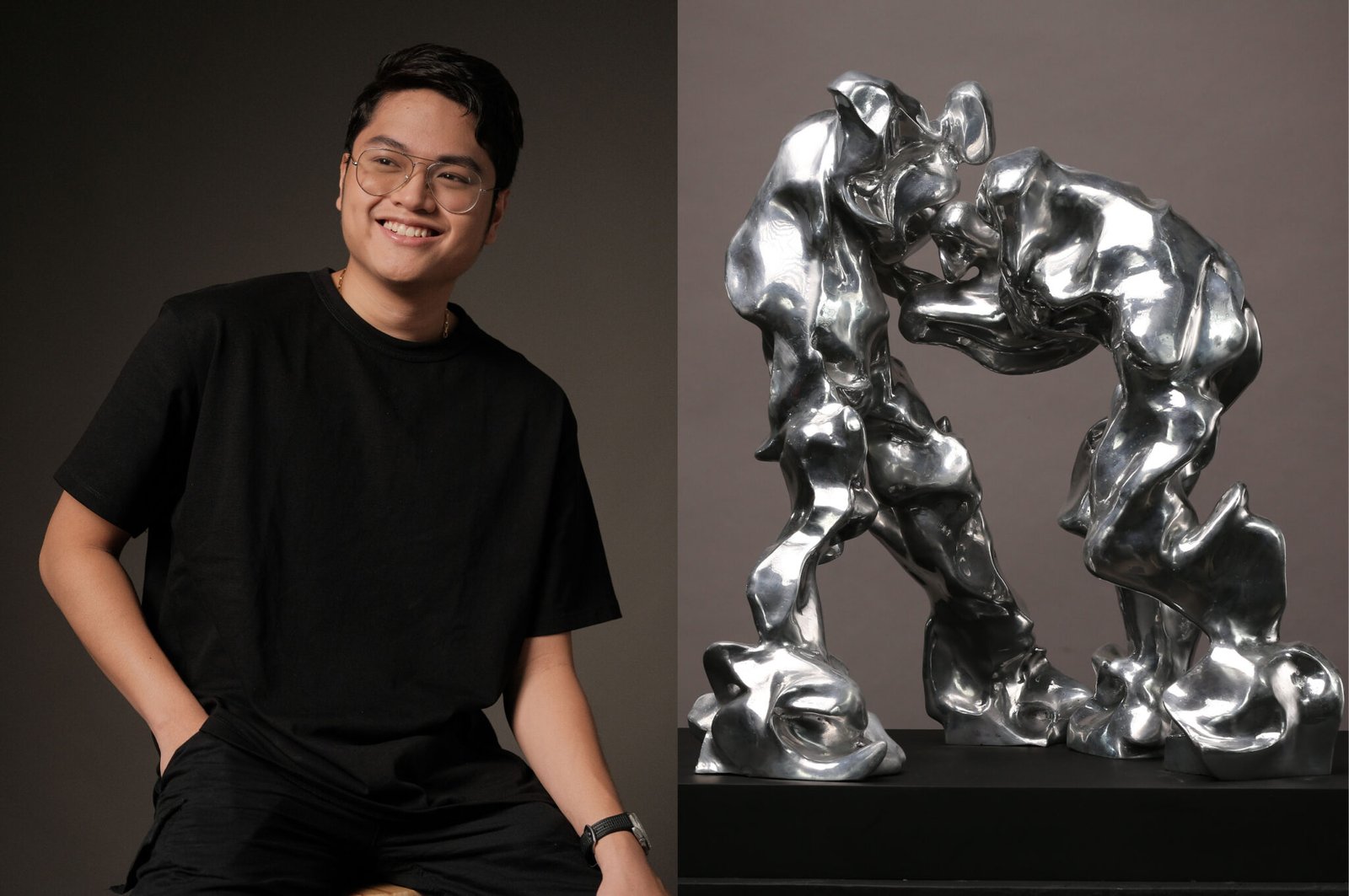Introduction and Interview Gabrielle de la Cruz
Images Metrobank Art & Design Excellence and Mateo Cacnio
Creative juices flowed during the most recent Philippine elections; memorable works of art and creative expression popped up from all sides of the political spectrum. One of the 2022 MADE Grand Awardees, fine arts student Mateo Cacnio, is among these artists. He reveals that his winning sculpture, Politika, was actually motivated by and created at that time. “I couldn’t help but notice how politics has become a battleground between facts and ego, constituting a cycle of hate and violence,” he shares. “I thought of this cycle as something dynamic and wanted to express this behavior through the use of raw, liquid forms trapped in space made eternal.”
Here is our conversation with Cacnio, who elaborates on how his first MADE entry led to a win and what contributions to the artistic dialogue he wishes to make after this victory.
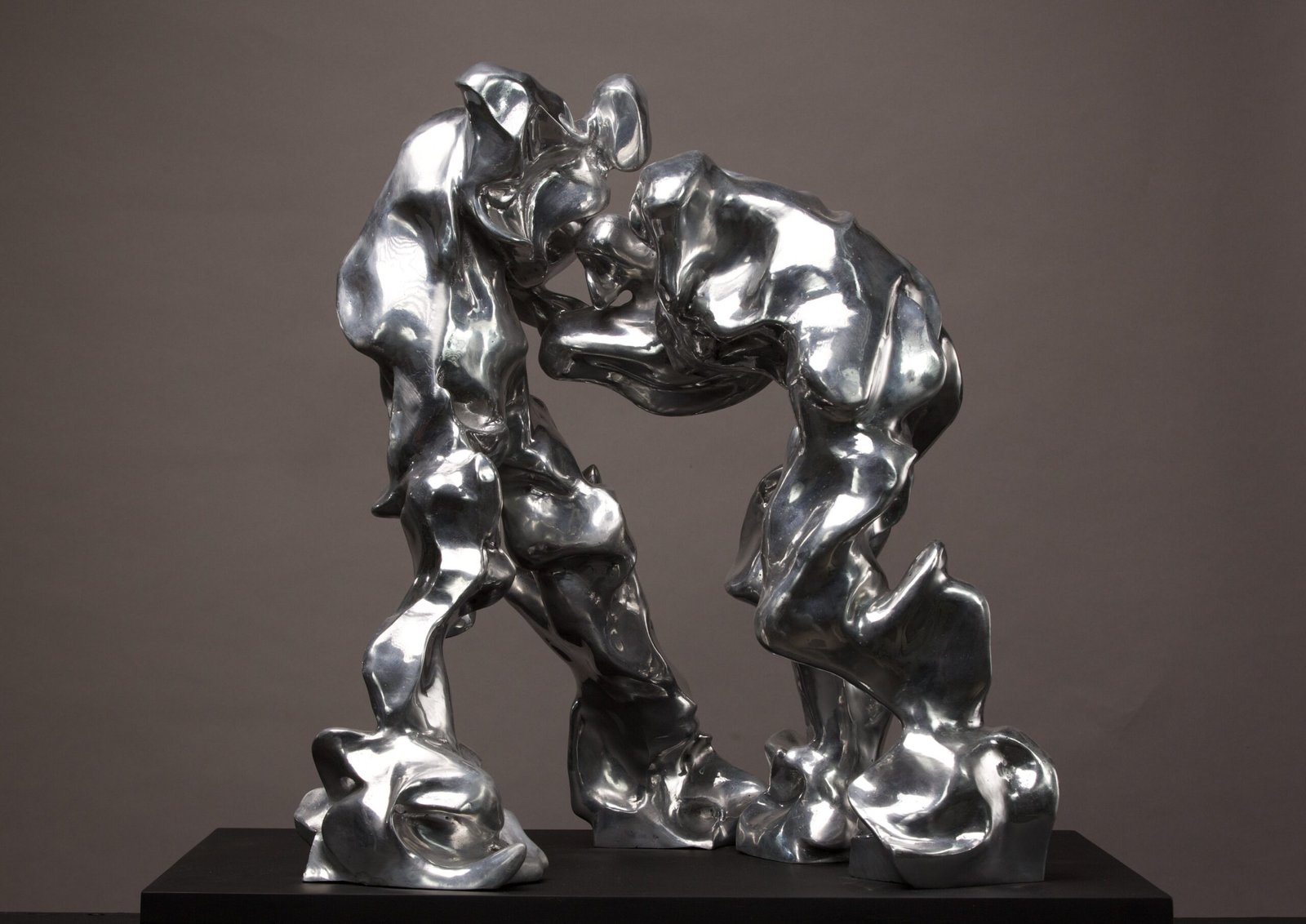

Kudos, Mateo! How do you feel after joining and winning MADE on your first try?
I owe a lot to my art history professors at the University of the Philippines since they opened my mind to what art is and what it could be. This led to my curiosity about the world around us. Being a fine arts student, I read tons of art books, watch artistic documentaries and video essays, and visit galleries and museums.
I have always been interested to join art competitions since they serve as venues to express my creativity and as testaments to my knowledge as a young artist. However, I was hesitant at first because the atmosphere of competitions intimidated me. The previous MADE entries inspired me to join this year.
I realized that the style of figuration I used for Politika is unique and very personal, so I decided to take the leap of faith. I didn’t expect to win; being qualified or forming part of the finalists was already enough because all I wanted was to share my art with the world.
Tell us more about your process of sculpting Politika. How long did it take you to finish it?
For me, everything starts with inspiration. During the recent campaign, I observed how man’s behavior tends to get violent when confronted with politics, how people could go as far as belittling and ruining one another.
I was inspired by Sumo wrestling for Politika given the extreme close contact and impact. Having multiple frames spliced out, I studied how gesture movement affects the forms presented. In the pictures shown in my study, the gesture of hugging was the most prominent.
After sketching out the study, I prepare the armature by rendering a simple yet thick 3D model for me to put clay on top afterward. While adding clay, I stressed the figure’s movement, imprinting my hand and fingers relative to the figure’s motion. I then smoothen the surface using my hands and fingertips.
The deconstructed aesthetic of my work happened accidentally. It transpired when I was experimenting with Umberto Boccioni’s theory and Henry Moore’s concept of modern sculpture: art needs to express nature, not mimic it. I played around with forms until I got satisfied with the piece’s overall look.
I worked on the sculpture for a total of two months, with constant observation and revision to satisfaction. Even when I was happy with it for a day, the next day could say otherwise, so criticism kept me going.
Finalizing the concept and sculpture occupied the first month, while the entire casting process filled the second. Casting is time-consuming because it involves rubber mold, wax coating, wax assembling, ceramic coating, dewaxing, melting, cutting, and finishing. Grinding the metal took a lot of time since I wanted it to look shiny to express the fluidity and expression of the human body with space.
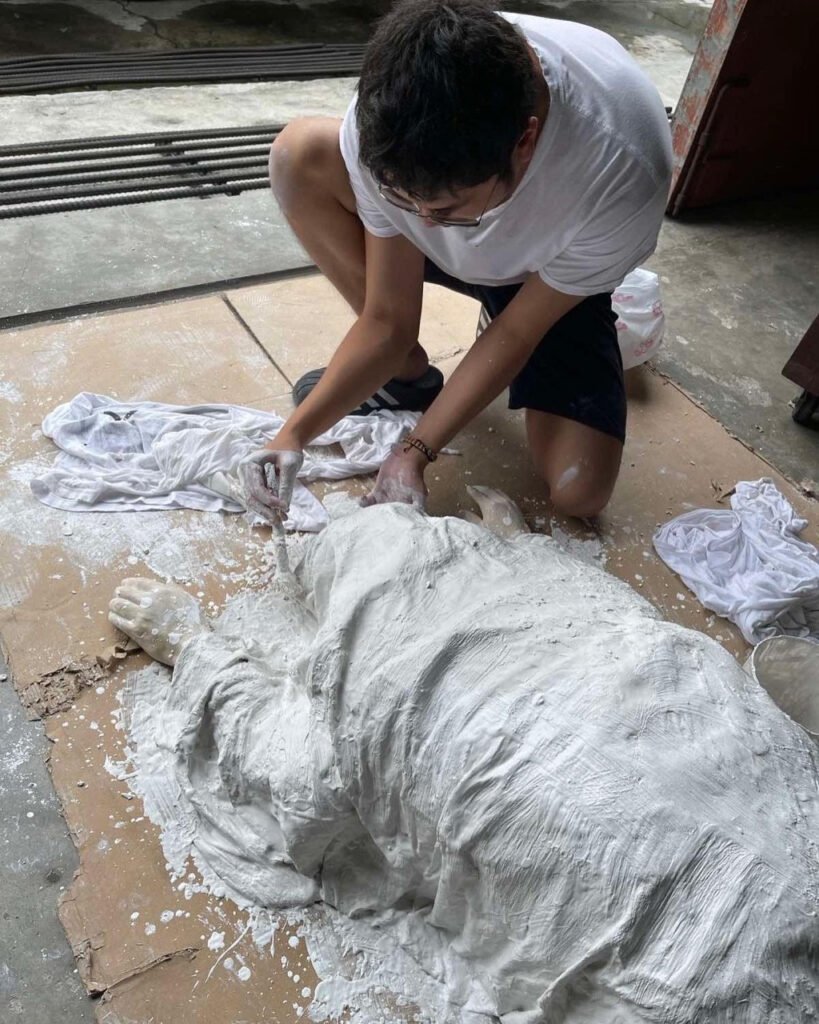

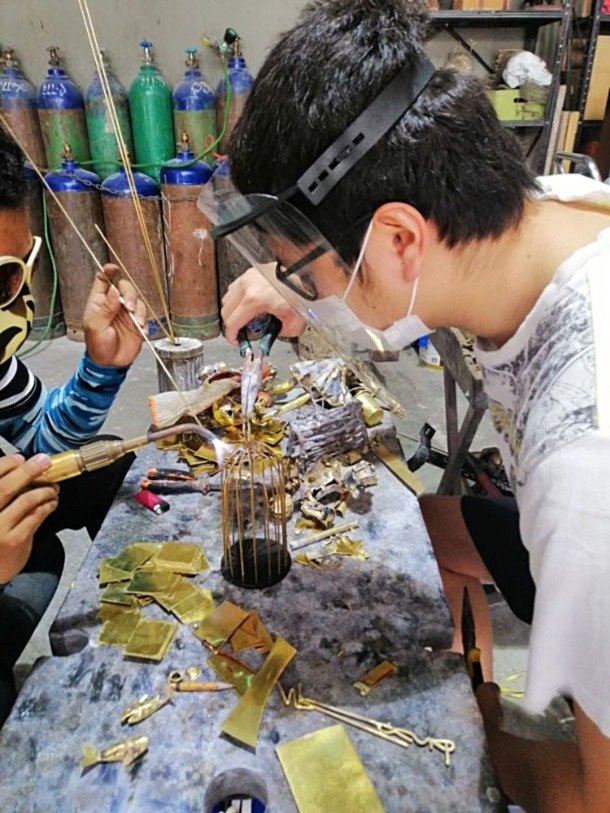
Can you further on this goal “to express the fluidity and expression of the human body with space?” How did you arrive at this theme?
The futurism movement by Italian artist Umberto Boccioni informed the concept of the work. In his practice, he sought to express the dynamism of the modern world around him. I then applied that concept in describing the vitality of one’s inner being, rendering the gestures and sensations of human activity.
This realization started when I was observing myself, eyes closed, conscious of how my body reacts to activities. The sensation is subjective. I imagine forms as fluid and dynamic, which became my perspective to express things. I then took it a step further by bringing it to reality through the form of metal sculpture and capturing that feeling in real space.
Why did you decide to use metal as your primary material? What is it about it that captured you? What other materials and sculptural processes do you wish to try?
Metal, specifically aluminum, interested me due to its durability and diversity. The strength of the material allows the artwork to remain in its perfect shape and form for an extended period; even when hit with a hard object, it won’t break. Metal exaggerates the notion that art captures the instantaneous and gives it permanence, a fragment from the ever-moving world made everlasting. Using aluminum for Politika challenges the viewer to recontextualize fluidity and solidity.
Aluminum is just the material I can access now since it’s cheap and affordable. I also want to explore other materials such as brass, bronze, lead, iron, and hopefully, stainless steel. To add, I experimented with resin, plaster, clay, and mixed media/ found objects before transitioning to metal.
Of course, I am not limiting my artistic practice to metal sculptures alone. Utilizing all mediums and techniques allows me to broaden my knowledge of the spectrum of art making. With that said, I want my art to venture into other forms such as painting, music, cinema, poetry, and fashion.


How do you see your work contributing to the greater whole of Philippine art? What do you wish to bring to the table?
Technological advancement is rapidly increasing in this modern age. We are blessed with new tools and equipment to make our lives easier and more sufficient.
I believe we must have the same mindset when it comes to art. We must use technology to produce better art and push for creation. I would say that we are already experiencing the subsequent impact of futurism.
My only wish is that as humans in the contemporary era, we do our best not to push for perfection but rather be open to innovation.
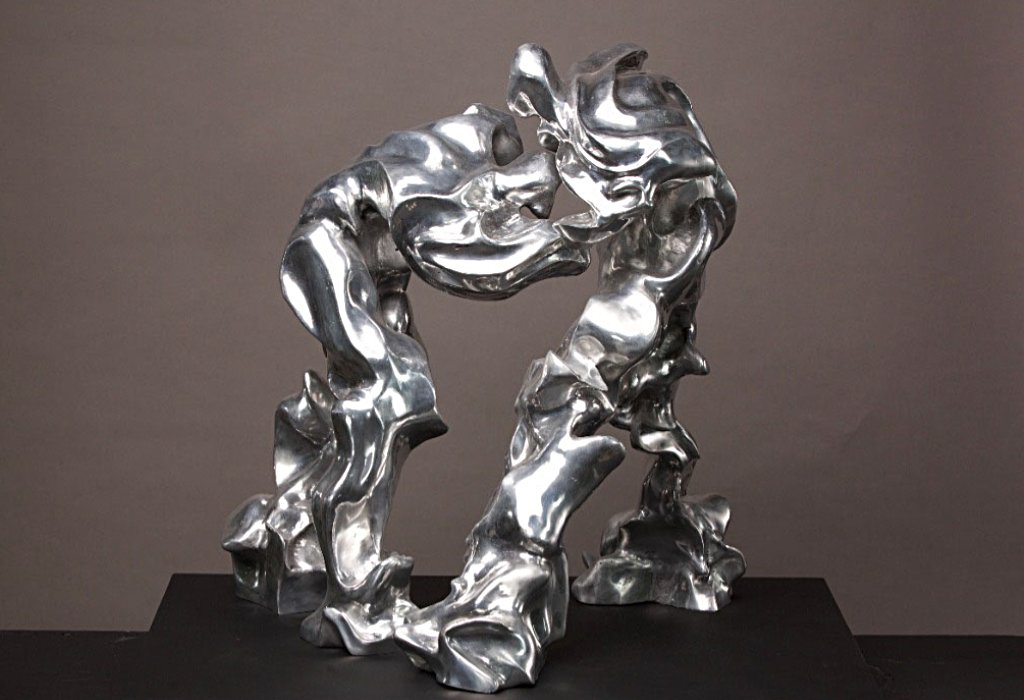

With Politika being the first artwork you’ve shared with the world, do you have a particular message or takeaway you wish for your viewers to remember?
Based on today’s social context, I want viewers to observe the piece and question how it communes with its title. I don’t want them to overthink. I believe that the intention of the work will appear once one reflects on how people behave. Ultimately, I want my viewer to get this visceral feeling of human expression. After all, I believe that art isn’t meant to be explained, but is made to be felt. •
Gabrielle de la Cruz started writing about architecture and design in 2019. She previously wrote for BluPrint magazine and was trained under the leadership of then editor-in-chief Judith Torres and previous creative director Patrick Kasingsing. Read more of her work here and follow her on Instagram @gabbie.delacruz.
